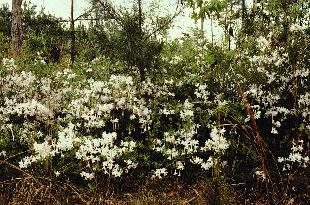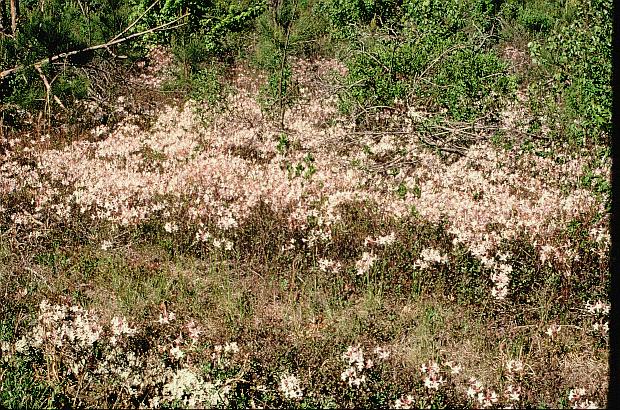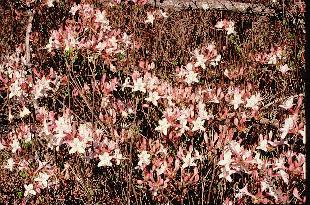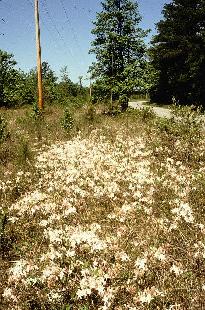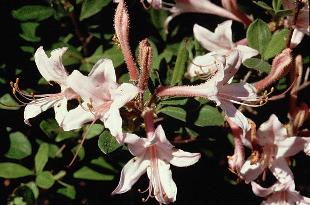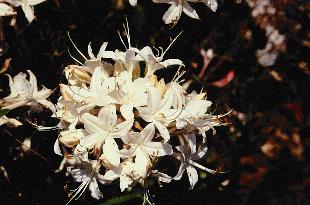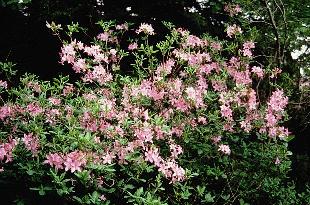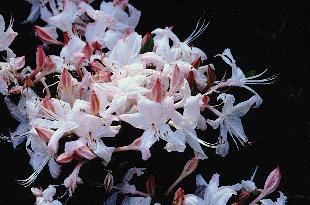 Rhododendron atlanticum, the Coastal Azalea, is a common
understory plant along the south eastern coastal plains of the United States.
The white flowers are 1 to 1.5 inches across, but are often blushed with pink on
the outside and some have a yellow blotch.
Rhododendron atlanticum, the Coastal Azalea, is a common
understory plant along the south eastern coastal plains of the United States.
The white flowers are 1 to 1.5 inches across, but are often blushed with pink on
the outside and some have a yellow blotch.
Collected by John Clayton in 1743, this plant was appreciated more in
England than in its native land. The plant habit is relatively low but
stoloniferous. Spreading by underground stems, R. atlanticum
can develop into very large colonies of an acre or more in sandy soils.
R. atlanticum is easy to propagate, and makes a nice
landscape plant in heavier soils which will restrict the spreading habit.
|

